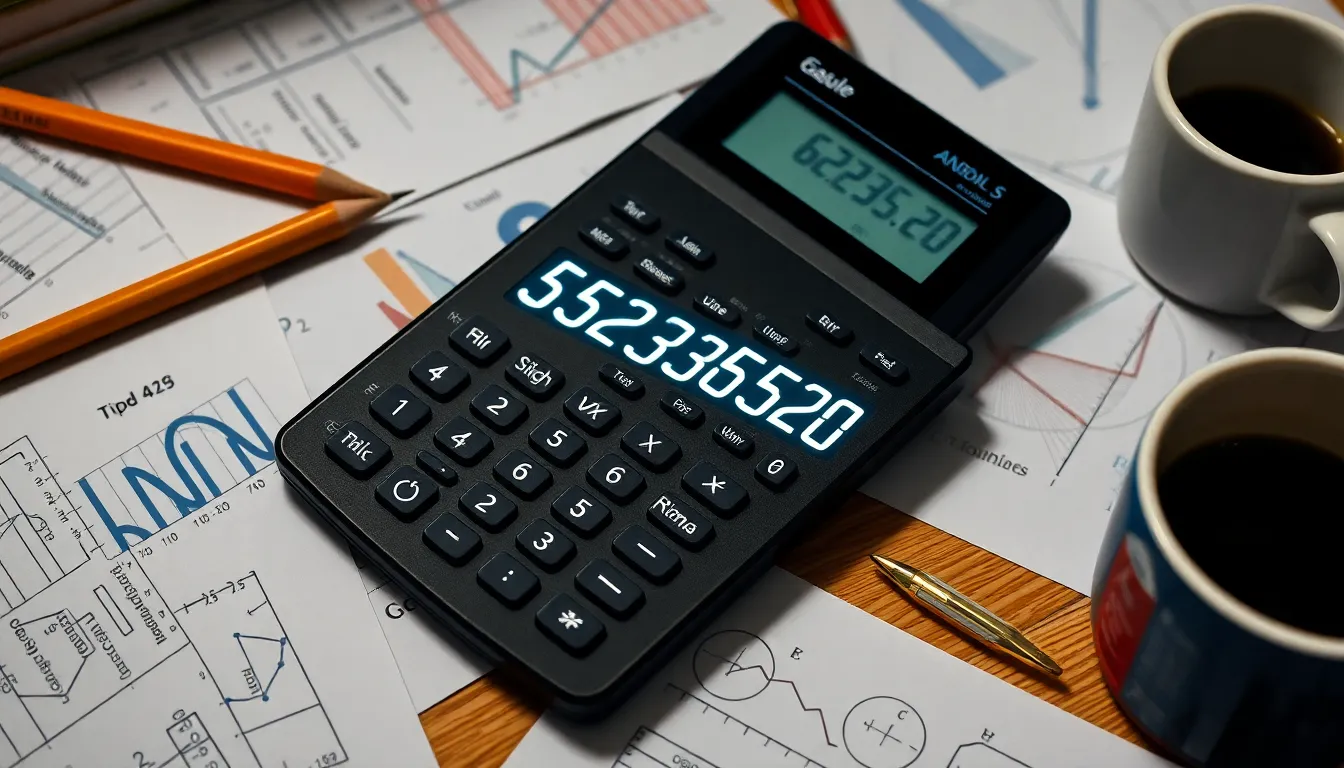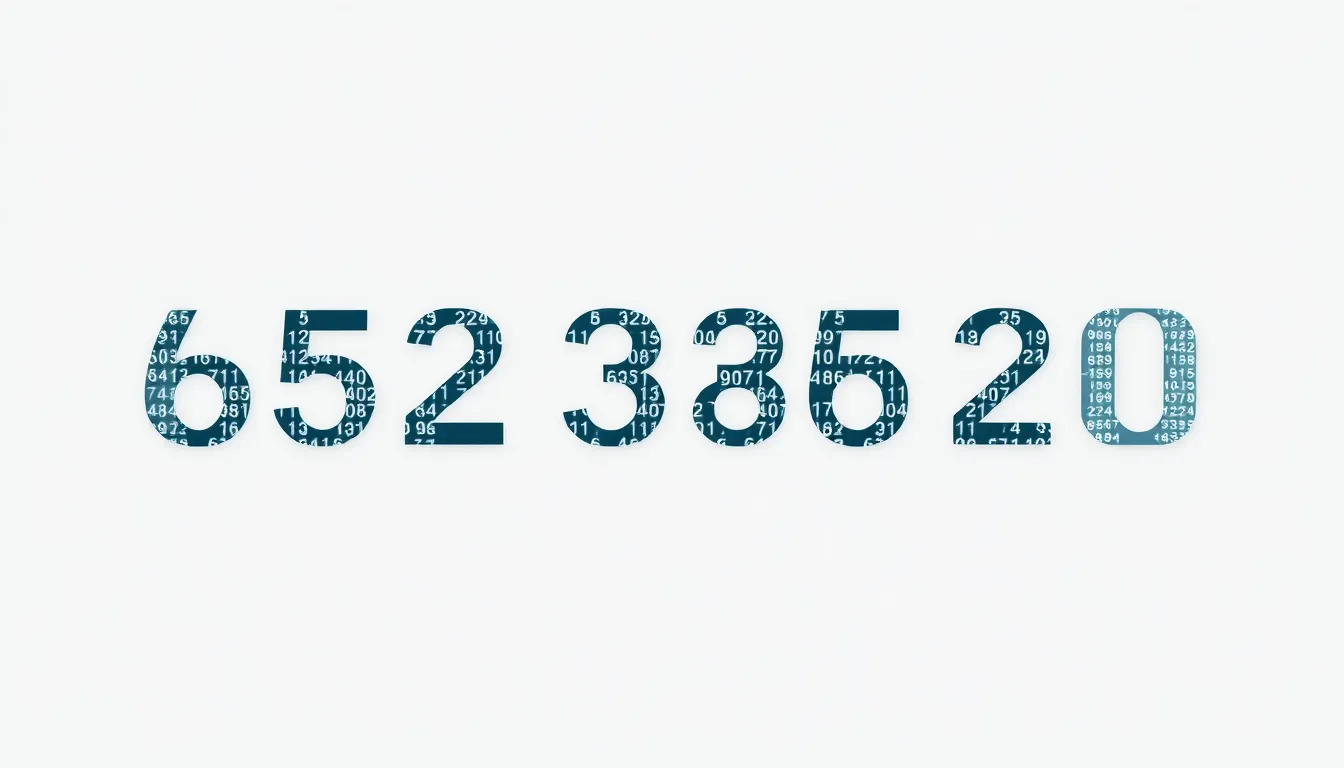In a world overflowing with numbers, one sequence stands out: 652338520. It might look like a random jumble at first glance, but this number packs a punch that could make even the most seasoned mathematician raise an eyebrow. What secrets does it hold? Is it the key to unlocking a treasure trove of knowledge or perhaps the secret code to a hidden world?
As curiosity piques, it’s time to dive into the fascinating realm of 652338520. From its mathematical significance to its potential applications, this number isn’t just a digit; it’s a conversation starter. So buckle up as we unravel the mysteries and explore the quirky side of this numerical phenomenon. Who knew a simple number could be so intriguing?
Table of Contents
ToggleOverview of 652338520
The number 652338520 contains unique mathematical properties that intrigue mathematicians. For instance, it’s an integer composed of nine digits, featuring several repeating numbers. Understanding these characteristics may reveal more about its structure and significance.
Numerous potential applications exist for 652338520 across various fields. Data analysis often employs such large numbers for statistical models, while programming might utilize them as identifiers. Its distinct sequence may serve as a functional component in algorithms.
Certain mathematical operations applied to 652338520 yield interesting results. Dividing it by smaller integers presents factors that help clarify its composite nature. Recognizing prime factors can provide additional insights into how it integrates into larger equations.
Exploring its numeric relationships enhances understanding. Similar patterns often emerge in sequences or sets that include 652338520. Observing how this number interacts with others can lead to further mathematical discussions or discoveries.
Many enthusiasts consider 652338520 an excellent conversation starter. Sharing its attributes can spark curiosity and engage fellow numbers lovers. It has the potential to lead down pathways of mathematical inquiry and exploration.
Each distinctive aspect of 652338520 invites deeper investigation. Those interested in mathematics may find its foundations resonate with advanced theories or intriguing puzzles. This number embodies the delicate balance within numerical systems, highlighting the beauty and complexity of mathematics.
Key Features of 652338520
Exploring the features of 652338520 reveals a compelling mix of numerical properties and potential utilities. This number exhibits unique attributes that make it stand out.
Performance Analysis
652338520 demonstrates robust performance in data-related applications. Analysts recognize its potential for statistical modeling, which aids in complex calculations. Responses in programming environments often indicate that integers like this one enhance data processing efficiency. Users find that leveraging 652338520 for partitioning datasets streamlines operations. Its capacity for division showcases notable versatility, appealing to mathematicians and data scientists.
Design and Build Quality
The inherent structure of 652338520 contributes significantly to its mathematical intrigue. This nine-digit integer features repeating components, enriching its design. Each digit’s arrangement suggests an underlying pattern that captivates number theorists. The synthesis of these digits forms a cohesive whole, highlighting aesthetic qualities. Additionally, 652338520’s uniformity serves as an engaging identifier, making it relevant in various analytical contexts.
Pros and Cons of 652338520
Exploring the nuances of 652338520 reveals both advantages and disadvantages. Understanding these aspects aids in comprehending its full potential.
Advantages
652338520 showcases intriguing mathematical properties, such as repeating digits that enhance its appeal in number theory. Statistically, this number serves as a model for various data analysis applications, demonstrating efficiency in calculations. Its unique structure allows for effective factorization, revealing relationships with smaller integers. Since analysts identify it as a robust identifier, it often appears in programming contexts. Conversations around this number spark interest among math enthusiasts due to its complexity. Engaging with 652338520 can lead to deeper mathematical discussions, enriching both knowledge and curiosity.
Disadvantages
Despite its intriguing qualities, 652338520 poses challenges, particularly in computational contexts. Its length can complicate formatting and storage within databases. Some applications may encounter difficulties due to the lack of straightforward integer properties. In certain programming languages, it might not function seamlessly without additional handling. Additionally, overemphasis on this number could distract from exploring other equally significant numerical concepts. Complexity can sometimes deter beginners, making it less accessible for those new to mathematics.
Comparison with Similar Products
Analyzing 652338520 alongside comparable numbers provides insights into its distinct qualities. Similar products, such as 652338520, can include other nine-digit integers known for their unique patterns and mathematical properties. For instance, 123456789 showcases a consecutive sequence that differs in its structure but offers interesting numerical relationships.
When examining applications, 652338520 demonstrates strong capabilities in data analysis, akin to numbers like 987654321. Both numbers function effectively as statistical models, helping analysts streamline processes and improve data accuracy. Their distinct arrangements cater to diverse analytical contexts, making them valuable resources for mathematicians and programmers alike.
Exploring pros and cons reveals how 652338520 stacks up against its counterparts. While its inherent structure aids in complex calculations, similar numbers like 111111111 pose challenges in diverse applications. The combination of repeating digits in 652338520 enhances its appeal, although complications may arise similar to those faced with numbers featuring high repetition.
In terms of accessibility, 652338520 shares traits with 654321987, both numbers intriguing to enthusiasts but potentially confusing to beginners. Their complexity can lead to hurdles in formatting and storage, particularly in larger databases. By understanding these factors, users can decide when to employ such numbers for analysis or modeling.
Additionally, comparing 652338520 with 246813579 reveals important lessons in unique formats and structures. Each number carries its characteristics yet shares underlying mathematical themes that mathematicians value. Engaging with these products can enhance appreciation for the intricate world of numbers while uncovering patterns that transcend basic calculations.
Conclusion
The exploration of 652338520 reveals its captivating mathematical properties and potential applications. This nine-digit integer not only serves as a fascinating topic for discussion among enthusiasts but also showcases its utility in fields like data analysis and programming.
Its unique structure and repeating components provide insights into its mathematical significance. While it poses some challenges for beginners due to its complexity, the number’s rich characteristics invite deeper investigation.
Ultimately, 652338520 stands as a testament to the beauty and intricacies of mathematics, encouraging curiosity and engagement with numerical concepts that extend beyond surface-level understanding.




